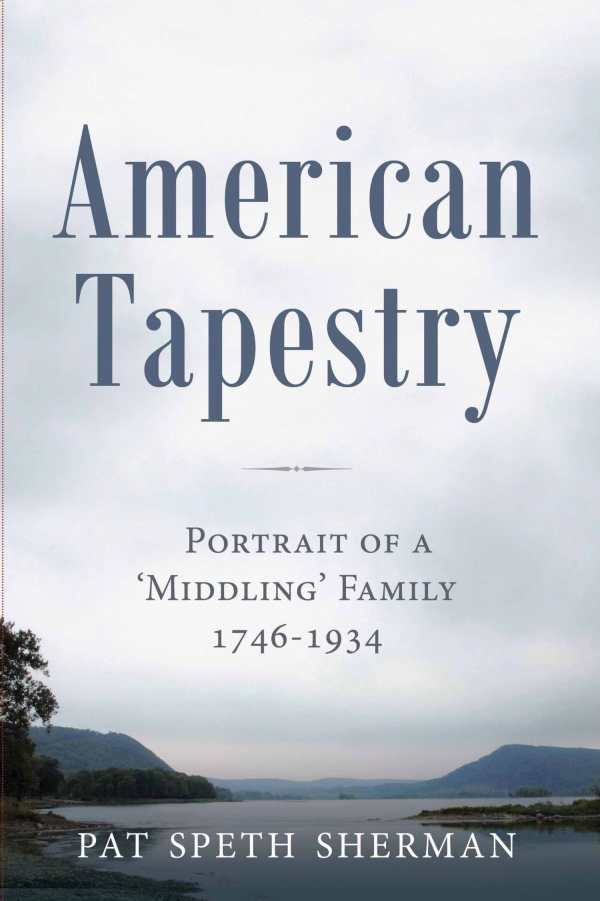American Tapestry
Portrait of a "Middling" Family, 1746-1934
American Tapestry mines family stories for an informative, down-to-earth trek through America’s past.
Pat Speth Sherman explores two centuries of American history through the eyes of her ancestors in her generational biography American Tapestry.
Speth Sherman’s family first arrived in America in 1746, when James Woodside left Ireland and settled in rural Pennsylvania. The family went on to prosper as productive middle-class citizens who participated in America’s political, military, and infrastructural development. Their lives are shared to reflect the progress and setbacks that the nation weathered thanks to the dedicated labor of ordinary individuals.
Speth Sherman tracks her ancestors’ involvement in numerous historical events, from the American Revolution to the Industrial Revolution. This approach—following one family over the course of centuries—is engaging, used to discuss and analyze history well. The fact that each person in her story is more or less average, living in average circumstances, results in an intriguing demonstration of how the consequences of major events, such as the Tammany Hall corruption scandal, manifested in places far removed from their scenes of action.
Other relatives made much more of an impact on history—though not all such impacts were positive. Simon Sallade and George McEliece were both politicians whose careers demonstrate that American politics and reporting have not changed much over two hundred years. But Speth Sherman faces her ancestors’ flaws head on, devoting special attention to how their successes often meant defeat and despair for the Indigenous people they displaced. She also wrestles with the legacy of her great-grandfather, a superintendent at a coal mine, who was hailed in his own time as a righteous man, despite his exploitation of children for labor and some other unsavory allegations.
An impressive amount of independent research is evident in the text and its appendices, which include transcripts of contemporary materials. Through these accounts, as well as through family stories, Speth Sherman reconstructs the lives of John Woodside and his descendants in a thorough manner. When direct information is not available, general sources are tapped to make reasonable guesses about what an individual’s life may have been like. This is most useful when it comes to reconstructing the lives of the book’s women, of whom are left almost no traces in the historical records.
While the lack of an epilogue or concluding chapter results in an abrupt ending, the book nonetheless covers a wide range of territory and time periods, and its singular approach, through the perspectives of everymen, results in interesting portraits—of state and county politicians; of soldiers who slogged and suffered through grunt work. The result is an informative, down-to-earth trek through America’s past.
The fascinating family biography American Tapestry collects an in-depth series of historical accounts together to trace the early history of the Eastern and Central United States.
Reviewed by
Eileen Gonzalez
Disclosure: This article is not an endorsement, but a review. The publisher of this book provided free copies of the book and paid a small fee to have their book reviewed by a professional reviewer. Foreword Reviews and Clarion Reviews make no guarantee that the publisher will receive a positive review. Foreword Magazine, Inc. is disclosing this in accordance with the Federal Trade Commission’s 16 CFR, Part 255.

